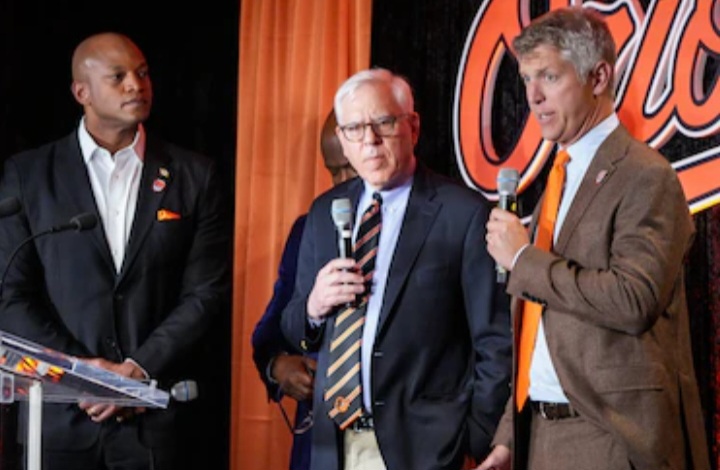No longer among the league’s lowest or a cause for embarrassment any time it is seen listed as such, the Orioles’ payroll has been less of a topic of conversation this winter than in years past — locally, at least.
In Davos, Switzerland, where the World Economic Forum is being held, the Orioles’ payroll has come up, which puts it on a level of great global import as owner David Rubenstein talked spending on the team he’s owned for nearly a year.
Rubenstein told Yahoo Finance, “The team is in pretty good shape,” noting its free-agent additions and departures, while pointing out that payroll is “higher than when we took over the team.”
“And so,” he said, “we have a payroll that we think is consistent with our needs and so forth. I don’t think anybody is not playing for the Orioles because of money reasons.”
It feels to me, even as we’re a few weeks from spring training, as if we can start to have conversations about the Orioles’ offseason as a completed exercise. I believe there’s still room for one large move if the right one presents itself, but I am not sure what that would be. That means the moves they have made — adding Tyler O’Neill, Charlie Morton, Tomoyuki Sugano, Andrew Kittredge and Gary Sánchez in free agency — plus the spate of arbitration raises they’ve given out, have brought the Orioles’ payroll from last year’s opening day figure of around $93 million to a projected $156 million, according to RosterResource.
This is a team whose payroll over the last decade has been at the extremes. It peaked in 2017 at $164.3 million on opening day, which ranked in the top third of the league, as the club spent at what the prior ownership group would later claim was beyond its means to keep a contending core together. We know how that went. The resulting regime change, which brought in general manager Mike Elias and company, came with significantly lower major league payroll as the club rebuilt.

